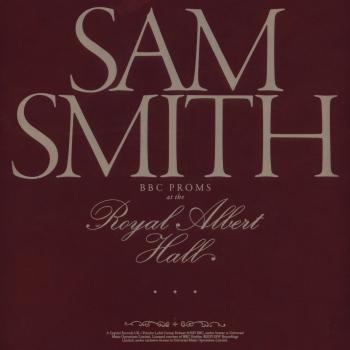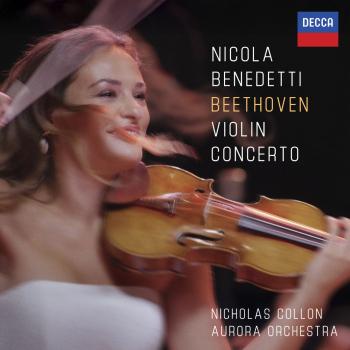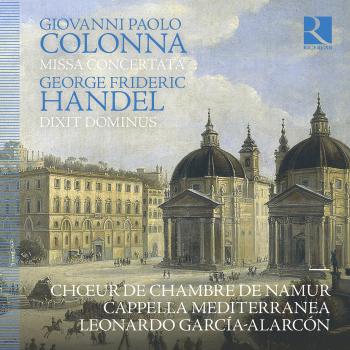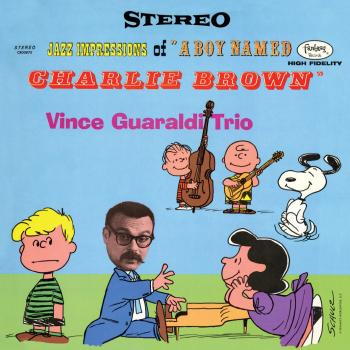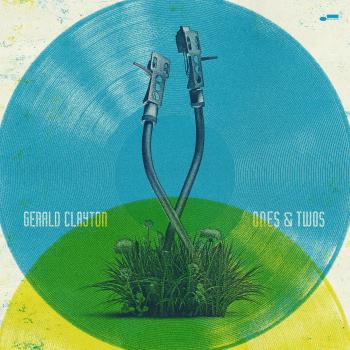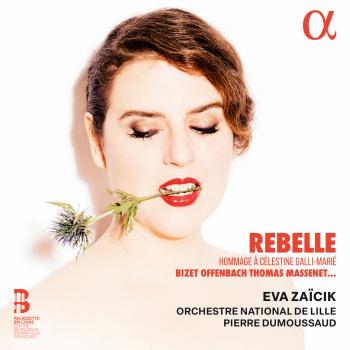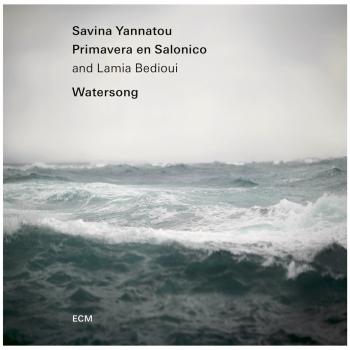
Strauss, R.: Der Burger Als Edelmann / Duett-Concertino / Capriccio Paavo Järvi & Die Deutsche Kammerphilharmonie Bremen
Album info
Album-Release:
2004
HRA-Release:
30.09.2011
Label: PentaTone
Genre: Classical
Subgenre: Orchestral
Artist: Paavo Järvi & Die Deutsche Kammerphilharmonie Bremen
Composer: Richard Strauss
Album including Album cover
- Le Bourgeois Gentilhomme (Der Burger als Edelmann) Suite, Op. 60, TrV 228c
- 1 I. Ouverture (Overture) 04:00
- 2 II. Menuett 01:39
- 3 III. Der Fechtmeister (The Fencing Master) 01:44
- 4 IV. Auftritt and Tanz der Schneider ( Entrance and Dance of the Tailors) 04:53
- 5 V. Das Menuett des Lully (Lully's Minuet) 02:14
- 6 VI. Courante 02:42
- 7 VII. Auftritt des Cleonte (Entrance of Cleonte) 04:26
- 8 VIII. Vorspiel zum 2. Aufzug (Prelude to Act II) 03:19
- 9 IX. Das Diner (The Dinner) 10:33
- Duett-Concertino, TrV 293
- 10 I. Allegro moderato 05:57
- 11 II. Andante 03:14
- 12 III. Rondo: Allegro ma non troppo 09:07
- Capriccio, Op. 85, TrV 279c
- 13 Capriccio, Op. 85, TrV 279: Sextett 11:22
Info for Strauss, R.: Der Burger Als Edelmann / Duett-Concertino / Capriccio
It was to be a theatrical experiment: a playing with the “theater within the theater,” or better: the “opera within the theater.” The comedy Le bourgeois gentilhomme by Molière, provided with incidental music, as the framework for the opera Ariadne auf Naxos. The occasion was the fiftieth birthday of Max Reinhardt, whom one also wanted to thank for the successful premiere of the Rosenkavalier. The authors: the librettist-composer team Hugo von Hofmannsthal-Richard Strauss.
In Molière’s comedy, the nouveau riche draper Jourdain has let his affluence go to his head to such a degree that he desires to vie with the aristocracy. What he has overlooked is that those around him are really only out for his money. At an ostentatious dinner, he thinks that he is host to a Turkish prince. However, the prince is in reality the costumed commoner Cléonte, who is in love with Jourdain’s daughter. To impress the supposed prince, the host prepares a private performance of the opera Ariadne auf Naxos.
The premiere was originally intended to take place in Berlin’s Deutsches Theater, but because of a lack of space one had to fall back upon Stuttgart, where the first performance was staged in October 1912. It quickly became clear that the work would have a difficult time, since, as Strauss put it, “an audience that goes to the theater does not want to hear opera, and vice versa. One did not have a cultural appreciation for the pretty ‘hybrid’.” Yet the two authors did not give up. They were too fascinated by the idea of a fusion of the various elements of theater. The work was divided up. The “opera in one act, including a prelude” Ariadne auf Naxos was created, and experienced its successful Viennese premiere in October 1916 – a version that was ultimately to establish its place in the repertoire. A year later, Hofmannsthal rewrote Le bourgeois gentilhomme as a “well-formed burlesque comedy,” and Strauss provided seventeen incidental pieces. The Ariadne opera was no longer part of it. Yet this version, too, found only moderate approval at its Berlin premiere in 1918. For this reason, Strauss decided to make nine of the incidental pieces into an orchestral suite and at least in this way “save” his music for the concert hall. This suite was performed for the first time by the Vienna Philharmonic on 31 January 1920, and finally achieved for Strauss the longed-for success.
Molière’s play was originally a comedy with music by Jean-Baptiste Lully. Strauss, in turn, quoted it – as shown by the fifth movement, “Menuett des Lully” – as a sort of homage to the baroque master. Indeed, the gallant world of the seventeenth century shimmers through again and again, since Strauss did, after all, employ light, courtly music as his material, which in his score he charmingly elaborated with his own compositional means. The plot of the play can still be recognized from the titles of the movements. The “Overture” depicts the nouveau riche Jourdain with his ostentatious airs and graces. The “Minuet” is a dance lesson. The “Fencing Master” describes Jourdain’s inept attempts at fencing. In the following three dance movements and in Cléonte’s ceremonious entrance, Strauss plays with baroque patterns. In the Intermezzo and the concluding “Dinner,” he finally allows his humor free rein when he quotes from Wagner’s Rheingold and baroque tone-painting. The ensemble is relatively small: a chamber orchestra grouped around a piano.
“You have to go all the way back to Fritz Reiner to find recorded performances with such lapidary delicacy and precision, and by exceeding Reiner in the wit and charm category, Paavo Järvi makes the music sparkle that much more. PentaTone's sonics bring out the best points of the music as a top-line jeweller showcases diamonds.” (Joseph Stevenson, ClassicsToday)
'The Stravinsky collection is particularly attractive as it contains some of the composer's best-known works for small orchestra in brilliant performances, vividly recorded. The entire program, is a delight.' (Bob Benson, www.classicalcdreview)
Die Deutsche Kammerphilharmonie Bremen
Daniel Sepec, Violin
Nicole Kern, Clarinet
Higinio Arrue, Bassoon
Paavo Jarvi, Conductor
Paavo Jarvi - Conductor (b. 1962)
has already conducted tens of world-famous orchestras. He is the Music Director of the Cincinnati Symphony Orchestra (from 2001) in the USA and Frankfurt Radio Symphony Orchestra (2006) in Europe and the Artistic Leader of Deutsche Kammerphilharmonie Bremen (2004). He is the Artistic Adviser for the Estonian National Symphony Orchestra, working on it every season. In addition, Paavo is always very expected by youth orchestras.
With unconventional interpretations, approach to the music and virtuosity, he is already a match for his father and although they are different, Paavo can be distinguished as an erudite and deep musician. By now, he is an experienced conductor with a large repertoire, who has always found a way to present the best of Estonian music. So far, Paavo is the only Järvi, who has won the Grammy award. Paavo Järvi will be the Music Director of l’Orchestre de Paris from year 2010.
Die Deutsche Kammerphilharmonie Bremen
The Deutsche Kammerphilharmonie Bremen is one of the world's leading orchestras, delighting audiences throughout the world with its unique musical style. The Estonian conductor Paavo Järvi has been the orchestra's Artistic Director since 2004.
An artistic highlight for the ensemble has been the Beethoven Project, with internationally acclaimed performances and glowing reviews. In 2009 the orchestra presented the complete cycle of all nine Beethoven symphonies with Paavo Järvi in Paris, at the Salzburg Festival, and at the Beethovenfest in Bonn. Deutsche Welle's award-winning TV documentary about the Beethoven Project was televised worldwide in September 2010, and in October all nine Beethoven symphonies, recorded in Bonn, were released on DVD. That year The Deutsche Kammerphilharmonie Bremen was also recognized with the Certificate of Special Merit of the German Record Critics' Award, in particular for the Beethoven Project, and Paavo Järvi received the ECHO Classic Award as Conductor of the Year 2010 for his Beethoven interpretations with the orchestra.
Founded in 1980, The Deutsche Kammerphilharmonie Bremen initially consisted of a group of outstanding music students with a grassroots constitution, in order to motivate the individual members both personally and musically. Early acid tests, such as an appearance at the UN in 1983 and Gidon Kremer's invitation to Lockenhaus in 1984/85, laid the foundations for the orchestra's rapidly growing international reputation. In 1987 the ensemble was institutionalized as a professional chamber orchestra in Frankfurt.
Since 1992 The Deutsche Kammerphilharmonie Bremen has been based in the Free Hanseatic City of Bremen, where it has become an indispensable part of the city's musical life. Every season the orchestra presents three subscription series, special concerts, three chamber music series, and the open-air festival ›Sommer in Lesmona.‹ The ensemble has also been an essential component of the Bremen Music Festival since 1998, appearing in outstanding musical theatrical productions with such artists as Klaus Maria Brandauer.
The orchestra's former Principal Guest Conductors or Artistic Directors have included Mario Venzago, Heinrich Schiff, Ji?í Belohlávek, and Thomas Hengelbrock. Daniel Harding held the post of Music Director from 1999 to 2003.
This album contains no booklet.

